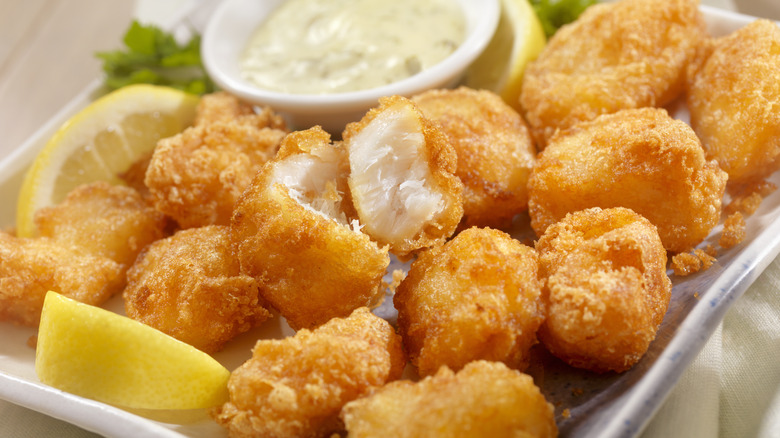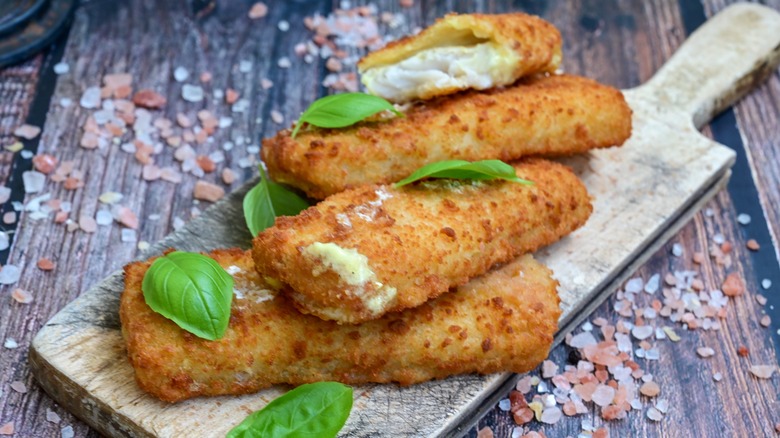The Absolute Best Fish To Use For Crispy Homemade Fish Nuggets
It's hard not to love a good fish nugget; they're just so simple, convenient, and crispy. We have a ranking list of frozen store-bought fish sticks and nuggets for those who want to peruse the ready-made options, but on those days when you'd rather make your own from scratch, what kind of fish should you use? For the best crispy fish nuggets, you want a fish with firm texture, mild flavor, and a low level of oil. There are plenty of fish that fall under this umbrella, fortunately. Try keeping an eye out for Alaskan cod, hake, halibut, catfish, haddock, or pollock.
So, why should you go for fish with these qualities? It all boils down to the science of a good fry. Firm fish keeps its nuggety shape during the frying process, and a low-oil fish provides a less greasy experience overall, not to mention making it easier to get your dredging powder of choice to stick on that bad boy. As for having a neutral flavor, this makes it more appealing to a wider audience and also gives the batter, seasonings, and sauces a chance to shine.
Tips and tricks for a better fish nugget
To make the best fish nuggets, keep in mind what sort of fish you want to avoid. Very delicate and flaky types, such as flounder, are a no-go because the process of frying up your nuggets is not gentle. There's a high chance that nuggets made with delicate fish will start to fall apart when you're frying them, or at least crumble the second you stab them with your fork. For the best fish nugget flavor and texture, you'd also want to avoid oily and strongly flavored varieties such as salmon, tuna, or mackerel.
Always remember to pat your fish dry before you begin the dredging process to help the breading stick better and promote a crispier crust . You can swap the flour with rice flour for an even more delicate and pronounced crispiness that suits fish well. When dredging fish, follow the same order for breading that you would use for chicken, i.e. alternating between wet and dry ingredients.
As far as cutting goes, make sure that all of the pieces are the same size, whether you prefer 1-inch nuggets or long sticks, so they can cook evenly. Finally, you can even prepare your fish ahead of time and freeze it until you're ready to make fish nuggets. This is great if you have an excess of fish you can't use right away. If you follow these tips, you'll have crispy, flavorful fish nuggets ready to eat whenever you want them.

